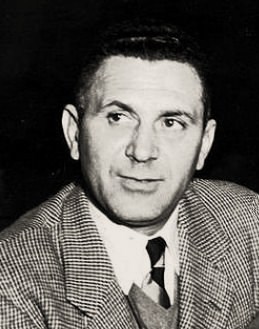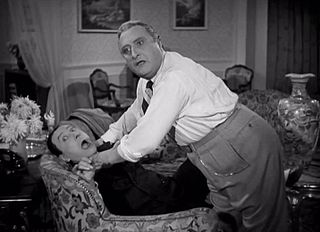Related Research Articles

Classical Hollywood cinema is a term used in film criticism to describe both a narrative and visual style of filmmaking which first developed in the 1910s to 1920s during the latter years of the silent film era. It then became characteristic of American cinema during the Golden Age of Hollywood, between roughly 1927 to 1969. It eventually became the most powerful and pervasive style of filmmaking worldwide.

Milton R. Krasner, A.S.C. was an American cinematographer who won an Academy Award for Three Coins in the Fountain (1954).
Ursula Herking was a German film actress. She appeared in more than 130 films between 1933 and 1972. She was born in Dessau, Germany and died in Munich, West Germany.
Beppo Brem was a German film actor, who was in over 200 film and television productions between 1932 and 1990. He often played stereotypically Bavarian characters, but managed to find respect as a character actor in later years.
Franz Grothe was a German composer, mainly for the cinema. His musicals were outstanding successes. He was required to be a member of the Nazi party.
Friedl Behn-Grund was a German cinematographer.

Carsta Löck was a German film actress.
Ernst Waldow was a German film actor. He appeared in more than 160 films during his career.
Georg Bruckbauer was an Austrian cinematographer who worked on over 120 films during his career.

Loris Gizzi was an Italian actor.
Duncan Sutherland was a Scottish-born art director, based in England where he designed the sets for over eighty films and television series between the early 1930s and mid-1960s. Sutherland spent much of the 1940s employed by Ealing Studios where he worked on films including It Always Rains on Sunday and The Loves of Joanna Godden.
Walter Haag (1898–1978) was a German art director. He worked on more than sixty films during his career including the 1940 historical melodrama The Heart of a Queen.
Paul Demange was a French film actor who had roles in over 200 films from 1933 to 1977.
Robert Herlth was a German art director. He was one of the leading designers of German film sets during the 1920s and 1930s.
Sam Nelson (1896-1963) was a director who worked from the end of the silent through the early 1960s. While most of his film work was in the assistant director role, he did direct over 20 films during the 1930s and 1940s, all of which were westerns. As an assistant director he worked on such notable films as Pennies from Heaven, And Then There Were None, All the King's Men, the original 3:10 to Yuma, Some Like It Hot, A Raisin in the Sun, and Spartacus. In addition he appeared in over a dozen films in small roles.
Paul Palmentola (1888–1966) was an Italian-born American art director. He designed the film sets for more than two hundred productions during his career, much of his work during the 1930s and 1940s at low-budget studios such as Mayfair Pictures, Monogram and PRC. He was later employed by Columbia Pictures in the early 1950s, working on their adventure films and with Sam Katzman's unit.

Bibi Lindström was a Swedish art director. She designed the sets for more than a hundred film productions.
References
- ↑ Strobl, Gerwin. The Swastika and the Stage: German Theatre and Society, 1933-1945. Cambridge University Press, 2007, p. 95